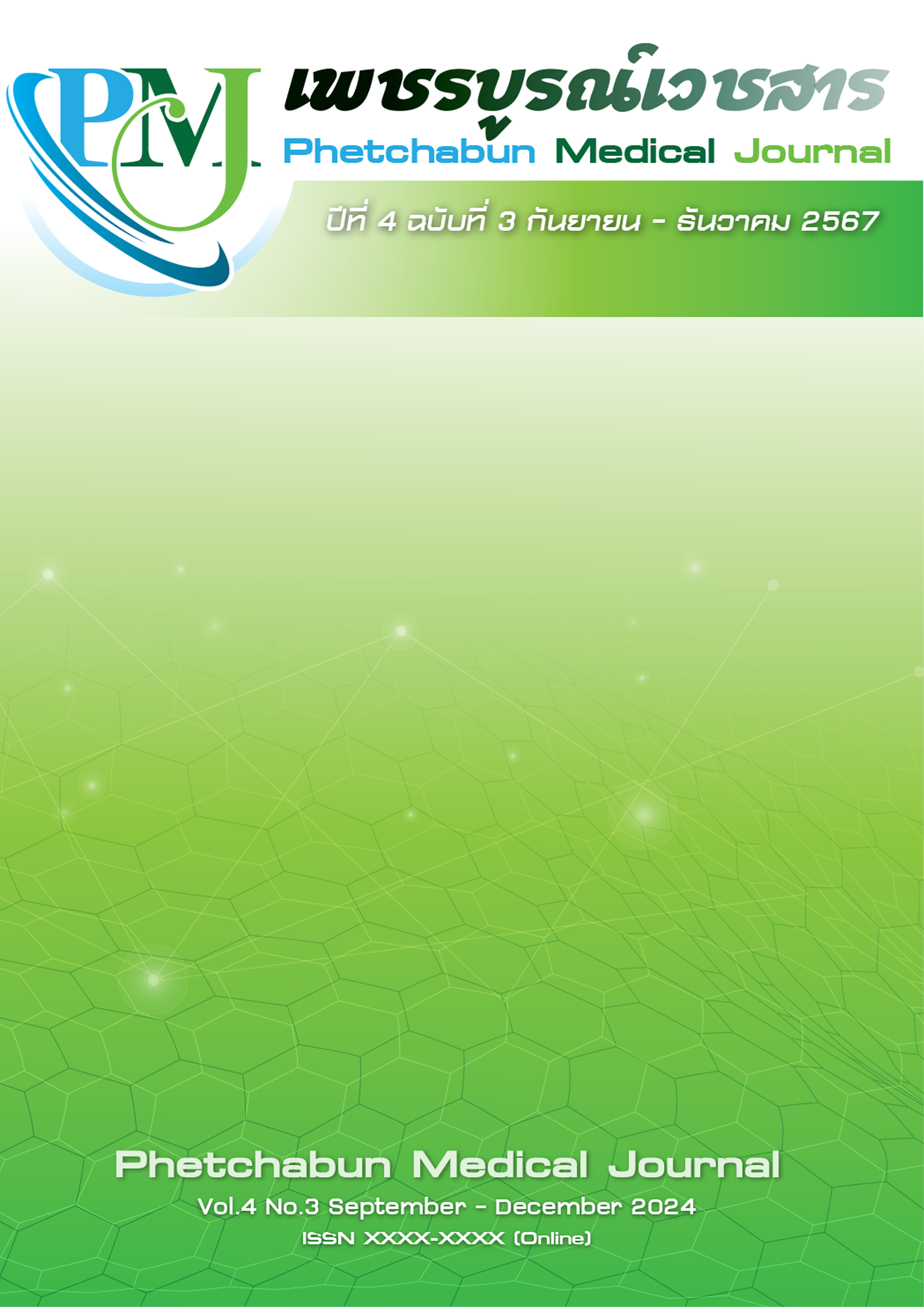Comparison of the Efficacy of Syphilis Screening Using Traditional and Reverse Algorithms in Pregnant Women and Their Sexual Partners at Wichianburi Hospital, Phetchabun Province, Thailand
-
Keywords:
Syphilis, Traditional Algorithms, Reverse AlgorithmsAbstract
Syphilis was a sexually transmitted disease that caused severe complications, including neurosyphilis and congenital syphilis in infants born to infected mothers. Two primary screening approaches for detecting syphilis were the traditional and reverse algorithms. This research aimed to compare the efficacy of these algorithms in pregnant women and their sexual partners at Wichianburi Hospital between March and October 2023, covering 880 cases. In the traditional algorithm, blood samples were initially tested using the Rapid Plasma Reagin (RPR) test, and if reactive, a titer test followed. The reverse algorithm began with the Anti-TP test (initial TT) using an automatic analyzer that provided results based on the Cut-Off Index (C.O.I). If positive, the RPR test was conducted, and if reactive, a titer test was performed; if the result was negative, the TPHA test (second TT) was carried out. Sensitivity, specificity, positive predictive value (PPV), negative predictive value (NPV), positive likelihood ratio (LR+), and the comparison of RPR titer with C.O.I. values were analyzed. The study revealed that the reverse algorithm demonstrated superior sensitivity at 100% compared to the traditional algorithm's 77.8%, while both methods shared a specificity of 99.9%. The reverse algorithm's PPV, NPV, and LR+ were higher, at 94.7%, 100.0%, and 862.0, respectively, compared to 93.3%, 99.5%, and 670.4 for the traditional method. Out of 18 patients diagnosed with syphilis, the reverse algorithm detected all cases, whereas the traditional algorithm identified only 14, resulting in 4 false negatives. Among 862 non-syphilitic patients, one false positive occurred with the reverse algorithm. The false negatives in the traditional method corresponded to cases with C.O.I. values below 30, while patients with an RPR titer of 1:32 had C.O.I. values exceeding 100. In conclusion, the reverse algorithm was shown to be more effective than the traditional method, detecting more infected individuals and offering better diagnostic opportunities. Thus, it is recommended for syphilis screening to reduce risks of misdiagnosis, missed treatment opportunities, and congenital disabilities.

Downloads
Published
How to Cite
Issue
Section
License
Copyright (c) 2024 Phetchabun hospital

This work is licensed under a Creative Commons Attribution-NonCommercial-NoDerivatives 4.0 International License.


